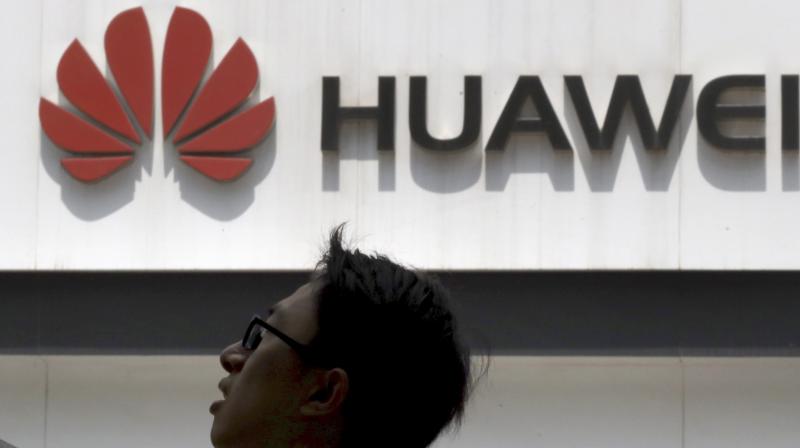Huawei sees China smartphone sales surge, courtesy promotion and patriotism

When 23-year-old Chinese student Aaron Huang started his hunt for an Android replacement for his Apple iPhone in April this year, it was clear which brand was trying hardest to win him over.
Promotional campaigns by Huawei Technologies Co Ltd and from local retailers supporting the brand were everywhere, said Huang, adding he was influenced by domestic media coverage that portrayed the United States as unfairly targeting the Chinese tech giant in its trade war.
“I felt like I should choose Huawei,” he said.
The advertising blitz and grassroots patriotism have proven to be a potent mix, amplifying the brand’s existing broad appeal in its home market - a market it is increasingly dependent on as Washington’s ban on sales of US components and software to Huawei hammers overseas demand.
Second-quarter China smartphone shipments for Huawei surged by a nearly a third from the same period a year earlier, with its market share rocketing 10.6 percentage points to a record 38 per cent , according to research firm Canalys. Shipments for domestic rivals and Apple Inc plummeted.
Huawei has lifted its China sales target for its consumer business group, said a company source, who was not authorized to speak on the matter and declined to be identified.
Within Huawei, employees refer to current strategies as “Battle Mode” and it has stepped up the opening of new stores including “Experience Centers” in the style of Apple shops, other company sources said. One Experience Center near its South China headquarters opened last month while a bigger one in Shenzhen’s tech district of Nanshan will open next month.
Analysts say Huawei has also been transferring unsold smartphone stock from other regions to China and even offering some rare discounting in its home and overseas markets as it seeks to offset sales declines in Europe and the United States.
Huawei declined to comment on its strategies for marketing and managing inventories, or its China sales target. It reiterated an earlier statement that it was not trying to trade on patriotic fervor.
LOTTERIES AND BULLFROGS
Sales promotions have included interest-free installment payment plans and lotteries for its premium P30 and Mate series. Analysts add that products from its three brands - Huawei, nova and Honor - outnumber those from rivals in every market segment.
Firms like Chinese electronics retailer Gome and small businesses have been eager to lend a hand, linking Huawei phones with patriotic support.
Fang Xia, a 38-year-old restaurant owner in Shanghai, said she was motivated by recent coverage of Huawei’s dispute with the United States to offer her customers a special deal.
“Tables that have four or more people with Huawei smartphones will get one free plate of Emperor Bullfrog,” proclaims an advertisement for her restaurant’s signature 88 yuan (USD 12.50) deep-fried frog dish.
Huawei’s overseas smartphone sales tumbled 28 per cent in the second quarter from the previous quarter, Canalys data showed, but the full impact of the ban is not yet known.
Warning that Huawei products could be a vehicle for Chinese espionage, the Trump administration now requires that US corporations which conduct business with Huawei gain a special license to do so. US government responses to requests for those licenses could come this week, US Commerce Secretary Wilbur Ross said last Tuesday.
In other measures to counter the ban which could strip its access to Google’s Android, Huawei is accelerating efforts to develop its own operating system called Hongmeng. It is looking to roll out a low-end smartphone equipped with Hongmeng in the fourth quarter, state-media outlet Global Times reported on Sunday.
Huawei declined to comment. It has previously said Hongmeng is designed for internet-of-things products and it prefers Android for its smartphones.
Even before the US ban, Huawei had been making big strides in China, moving upmarket into the USD 500-800 price range and luring customers away from the likes of Apple with improved camera quality.
“In any segment, it has several options for consumers, that is more than any other brand has to offer,” said Canalys analyst Mo Jia, describing Huawei’s strategy as one of “bombardment”.
Rivals are hurting. Xiaomi saw its second-quarter China shipments tumble 20 per cent from the same period a year earlier, Vivo’s slid 19 per cent while Oppo’s dropped 18 per cent. Apple’s shipments fell 14 per cent, and analysts and Chinese consumers say the US firm could be hit further amid an intensifying US-China trade war.
Xiaomi, Apple, Oppo and Vivo declined to comment.
While Huawei has managed a huge boost in its home market, analysts said China sales may not always stay unscathed as it could struggle to replace US components and software.
“Without the original supply chain, we may see its speed of development start to slow down,” said James Yan, research director at Counterpoint Research.
